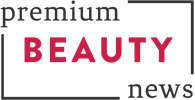Defining natural cosmetics

A new U.S. standard may soon compete with the NPA standard for Personal Care Products to define what a “natural cosmetic" might be. Indeed, NSF International, a testing and certification organization accredited by the American National Standards Institute (ANSI), and Natrue, a Brussels-based organisation promoting natural and organic cosmetics, have announced their partnership to develop the first U.S. standard on this issue.
In practice, NSF International will use the Natrue Standard Level 1 [1] as the base for the development of the new American standard, which will be elaborated in an open forum using a consensus-based process, with a committee having balanced membership of interested stakeholders, including members of industry as well as regulators, academia and consumers. As it will not represent the point of view of a single trade association, it will therefore comply with ANSI requirements to be recognized as an official American National Standard, which is not the case of the NPA standard.
Transatlantic harmonization
According to Natrue, “the partnership marks an important step towards international harmonization and a globally recognized definition of natural in personal care product.” Actually, the future standard should make life easier for producers of natural cosmetics who wish to sell their products both sides of the Atlantic.
In 2010, Natrue already signed an equivalency agreement for the Natrue Level 2 and the NSF/ANSI 305 standard. This mutual-recognition agreement concerned products cosmetics manufactured with organic ingredients, referred to as products ’containing organic’. In addition to their cooperation on the new American standard for natural personal care, Natrue and NSF have also signed an agreement to harmonize the criteria for these two standards.
Competition between certification bodies
While this new agreement is presented as a means to eliminate confusion among consumers it is not sure it will significantly improve a situation that is actually getting increasingly complex with the perspective of two standards competing to define natural cosmetics in the U.S.A. This strategic move can also be viewed as another step in the competition between certification bodies before the publication of the ISO standard on natural and organic cosmetic, which is currently under discussion. [2]




























